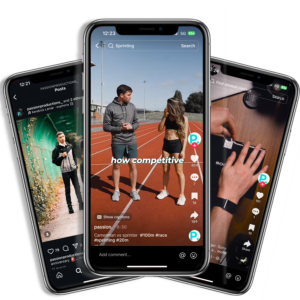How Data Can Be Used to Develop and Optimise Paid Ad Campaigns
One of the main things we get asked by potential clients is how much money they need to spend on pay-per-click (PPC) budgets—and the answer is, it depends. Everything we do is based on data, and even though it’s simple enough to throw a ‘default’ number in there like “£20 a day on Google Search” or “£50 a day on Meta Ads,” the real answer is more strategic. Planning your campaign and understanding who you’re targeting will give you valuable insights into what you can expect to gain from your ads and allow you to propose a budget based on actual projected outcomes, not just guesswork.
I’ve seen agencies that pull numbers out of thin air to suggest budget increases with no real indication of why it’s necessary – or even suggesting starting on a budget too small to gauge any real results to evaluate performance effectively.
The best-performing ad campaigns aren’t built on gut feelings—they’re built on data. Data helps us decide everything, from who sees your ads to how much you should bid and when to scale.
Understanding Your Audience
You know your business better than anyone else – but do you know your target audience?
The foundations of any successful ad campaign is knowing EXACTLY who you’re targeting. With access to real audience insights and tools that tell us exactly who’s searching or engaging with our chosen keywords or who fits into our ideal audience criteria – building a successful, impactful campaign is easier than ever.
For example, tools like Google Analytics, Meta Audience Insights, and first-party customer data allow you to see patterns in age, gender, location, interests, and online behaviors. Instead of making assumptions, you can create highly detailed audience segments based on actual data.
- Who’s clicking on your ads?
- What time of day are they converting?
- Which devices are they using?
So for example, if you’re running Meta Ads and notice that 80% of your conversions come from mobile users aged 25-34, but your budget is being spread equally across all devices and age groups, that’s wasted spend. Use that data to refine your targeting and make sure your budgets being spent properly.
Use Data to Set Your Ad Budget
One of the biggest mistakes businesses make is setting a budget without looking at the numbers first. Yeah – you could start with £20 a day and see what happens, but wouldn’t it be better to know what you’re going to get in return before you start spending like mad?
This is where cost-per-click (CPC), conversion rates, and customer lifetime value (LTV) come into play.
- Average Cost Per Click (CPC) – If you’re running a Google Ads campaign, tools like the Google Keyword Planner can give you a rough idea of what a click will cost for your chosen keywords. If your CPC is £1.50, you know that £20 a day will get you around 13 clicks per day.
- Calculate your expected conversion rate – If past data shows that 5% of people who click your ad end up making a purchase, that means 13 clicks a day = around one sale every two days.
- Factor in your average order value (AOV) and profit margins – If your average sale is worth £50, and your ad spend is £20 every two days (£10 per sale), you’re making £40 per sale before considering other costs. If that’s profitable, great! If not, you need to re-evaluate!
This approach makes sure that your budget isn’t just pulled out of thin air—it’s based on real expectations and actual data that you can use to optimise and scale your campaigns effectively.
Optimising Your Ads Based on Performance Data
Launching your ad campaign is the start of the process though. Continuous pruning and optimisations help you get the best ROAS (Return On Ad Spend) possible.
A/B Testing: The Reasoning Behind The Guesswork…
A/B testing (split testing) is when you ‘test’ different variations of your ad. This can include headline variants, different descriptions, calls-to-actions – even down to something as small as the colour of your text. When done effectively – split testing can give you valuable insights on what resonates with your audience and what doesn’t – in real time!
For example:
- Ad A: “Get 20% Off Your First Order – Shop Now” (static image)
- Ad B: “Hurry! Limited-Time 20% Discount” (video ad)
If Ad B is getting a higher CTR and lower cost-per-conversion, then that’s your winner. But without testing, you’d never have known. Then what? Well, then you could introduce a new ad variant to run against your better performing ad and try and one up yourself!
Adjusting Bids and Budget
Setting a budget and never reviewing or updating it. If your campaign is generating leads at a cost of £5 per lead and your goal was £10 per lead, then why wouldn’t you scale up?
On the other hand, if a campaign is draining your budget and giving you zero conversions, it’s time to either pause it or update your targeting, creatives, or CTA.
Think Beyond The Click – Use Retargeting to Increase Conversions
Not everyone who clicks your ad will convert on the first go. That’s why retargeting (also remarketing) is one of the most powerful ways to recover lost traffic and boost conversions.
Have you ever added a product to your basket and then bailed it at the last minute – only to be followed everywhere by ads for that product? That’s remarketing!
With Meta’s Pixel, LinkedIn’s Insight Tag, Google Ads remarketing lists or whatever tracking script on TikTok, Amazon etc – you can retarget users who:
- Visited your website but didn’t buy
- Added a product to their cart but abandoned checkout
- Watched your ad video but didn’t click
Retargeting ads often convert at a much lower cost than first-time ads because these people are already interested—all it takes is a little push!
If you’re not using historical data or even projected data to inform your next move on your ad campaigns – it can be difficult to set and reach your targets. Our paid media specialists use data in their decision making process every day – whether it’s to determine a redistribution of daily spend or even what creative is working best. If you want to benefit from well-informed ad campaign optimisations – get in touch to speak to our team today – or request a callback here:




